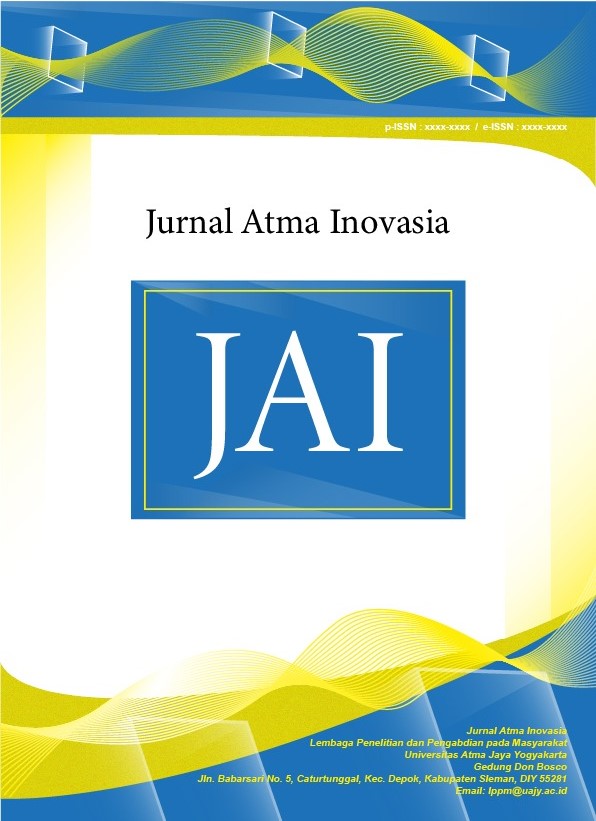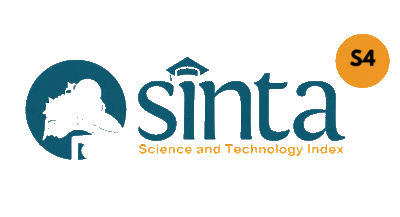Pengembangan desa wisata zona B di Desa Gilangharjo, Kabupaten Bantul
DOI:
https://doi.org/10.24002/jai.v3i4.7378Abstract
The design of organic paddy fields and Gunung Cilik tourist areas is a part of Gilangharjo Village tourism development based on community empowerment (CBT). The tourist facilities provided in the area were designed to preserve local wisdom and ecological principles included as characteristics of CBT. The preservation of local wisdom was manifested through applying Bantul's distinctive architectural style and using local materials and vegetation. The ecological principles were applied through a temporary stage system, efficient material building design, high albedo materials, and porous paving. This design hopefully can empower the local community to the maximum extent, preserve local wisdom, and increase tourism visits without harming the environment.
References
G. O. Silvandi, I. Batusangkar, S. Mandalia, and I. Batusangkar, “Pengembangan taman margasatwa dan budaya Kinantan dengan menerapkan aspek pariwisata 3S,” i - Tour., vol. 1, no. 2, pp. 70–81, 2021.
I. M. S. Amerta, “Community based tourism development,” Int. J. Soc. Sci. Humanit., vol. 1, no. 3, pp. 97–107, 2017.
K. Bantul, Peraturan Bupati Bantul Nomor 149 Tahun 2022 Tentang Panduan Arsitektur Bangunan Baru Berciri Khas Bantul. Bantul, 2022.
F. Celik, “Ecological Landscape Design,” Adv. Landsc. Archit., 2013.
C. Hernandez-santin, M. Amati, S. Bekessy, and C. Desha, “A Review of Existing Ecological Design Frameworks Enabling Biodiversity Inclusive Design,” Urban Sci., vol. 6, p. 95, 2022.
H. Liu, C. Hou, and S. R. Ramzani, “Application of ‘Ecological Design’ Concept in Rural Leisure Landscape Design,” Adv. Soc. Sci. Educ. Humanit. Res., vol. 341, pp. 401–405, 2019.
K. Chaowana, S. Wisadsatorn, and P. Chaowana, “Bamboo as a sustainable building material—culm characteristics and properties,” Sustain., vol. 13, no. 13, 2021.
P. F. Borowski, I. Patuk, and E. R. Bandala, “Innovative Industrial Use of Bamboo as Key ‘Green’ Material,” Sustain., vol. 14, no. 4, 2022.
F. Binarti, S. Triyadi, M. D. Koerniawan, P. Pranowo, and A. Matzarakis, “Climate characteristics and the adaptation level to formulate mitigation strategies for a climate-resilient archaeological park,” Urban Clim., vol. 36, no. November 2020, p. 100811, 2021.
S. Tsoka, T. Theodosiou, K. Tsikaloudaki, and F. Flourentzou, “Modeling the performance of cool pavements and the effect of their aging on outdoor surface and air temperatures,” Sustain. Cities Soc., vol. 42, no. July, pp. 276–288, 2018.
F. Abbondati and L. Cozzolino, “Porous Pavements in the Context of Sustainable Urban Design Concerns,” ARPN J. Eng. Appl. Sci., vol. 15, no. 20, pp. 2327–2335, 2020.
I. Abustan, M. O. Hamzah, and M. A. Rashid, “Review of permeable pavement systems in Malaysia conditions,” OIDA Int. J. Sustain. Dev., vol. 4, no. 02, pp. 27–36, 2012.
F. Binarti, M. D. Koerniawan, S. Triyadi, and A. Matzarakis, “The predicted effectiveness of thermal condition mitigation strategies for a climate-resilient archaeological park,” Sustain. Cities Soc., vol. 76, p. 103457, 2022.
A. Muscio, “The solar reflectance index as a tool to forecast the heat released to the urban environment: Potentiality and assessment issues,” Climate, vol. 6, no. 1, 2018.
M. Taleghani and U. Berardi, “The effect of pavement characteristics on pedestrians’ thermal comfort in Toronto,” Urban Clim., vol. 24, pp. 449–459, 2018.
S. Kappou et al., “Review Cool Pavements: State of the Art and New Technologies,” Sustain., vol. 14, no. 9, 2022.
Downloads
Published
Issue
Section
License
Copyright (c) 2023 Floriberta Binarti, Nicolaus Nino Ardhiansyah, Adrian Hansen Liauw, Steven Chandramaya

This work is licensed under a Creative Commons Attribution-ShareAlike 4.0 International License.










